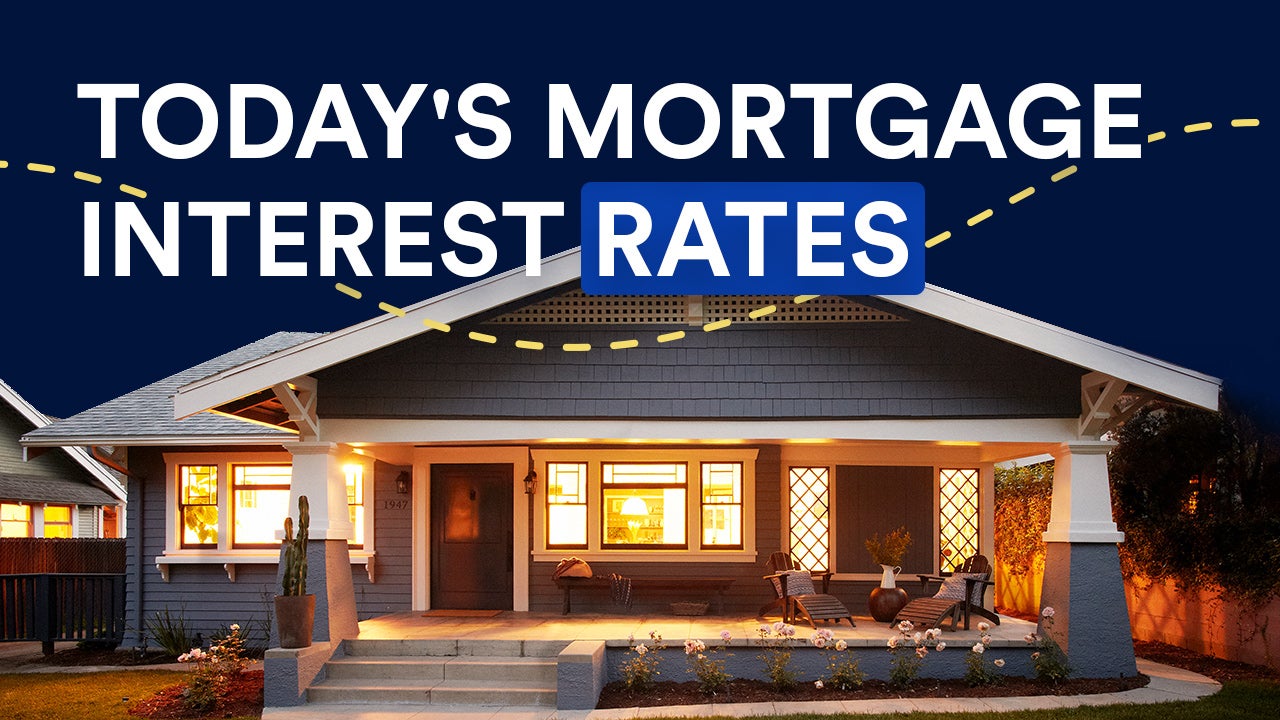Most rates decline - Mortgage and refinance rates for today, February 7, 2025


Mortgage rate trends
APRs not included. For our most recent APR information, please visit our
rate table.
-
30 year fixed
-
15 year fixed
-
5/1 ARM
-
30 year fixed jumbo
Average mortgage rates were mostly lower compared to a week ago, according to Bankrate data. Average rates for 30-year fixed, 15-year fixed and jumbo mortgages each decreased, while rates for ARM loans rose.
| Mortgage type | Today's rate | Last week's rate | Change |
|---|---|---|---|
| 30-year fixed | 6.91% | 6.96% | -0.05% |
| 15-year fixed | 6.18% | 6.20% | -0.02% |
| 5/1 ARM | 6.32% | 6.31% | +0.01% |
| 30-year fixed jumbo | 7.01% | 7.02% | -0.01% |
Rates as of February 7, 2025.
The rates listed here are Bankrate's overnight average rates and are based on the assumptions here. Actual rates listed on-site may vary. All rate data is accurate as of Friday, February 7th, 2025 at 6:30 a.m. ET.
Several factors move mortgage rates, some more impactful than others. The Federal Reserve capped off 2024 with a third rate cut, yet mortgage rates have only climbed. At its most recent meeting ending Jan. 29, Fed policymakers opted to uphold its target rate.
Keep in mind that the Fed doesn’t delegate mortgage rates. Thirty-year mortgage rates tend to track the 10-year Treasury yield, which shifts continuously alongside the economy and the forces that shape it.
“After jumping more than a full percentage point since September, long-term Treasury yields have eased a bit over the last 10 days,” says Greg McBride, CFA, chief financial analyst for Bankrate. “But mortgage rates remain above 7 percent, a further headwind to affordability and keeping home sales on ice.”
Mortgage purchase rates
30-year mortgage rate retreats
0.05%
Today's average rate for the benchmark 30-year fixed mortgage is 6.91 percent, down 5 basis points over the last seven days. This time a month ago, the average rate on a 30-year fixed mortgage was higher, at 7.06 percent.
At the current average rate, you'll pay a combined $659.27 per month in principal and interest for every $100,000 you borrow. Compared with last week, that's $3.35 lower.
Learn more about 30-year mortgage rates, and compare to a variety of other loan types.
15-year mortgage rate moves down
0.02%
The average rate for a 15-year fixed mortgage is 6.18 percent, down 2 basis points over the last week.
Monthly payments on a 15-year fixed mortgage at that rate will cost $854 per $100,000 borrowed.
5/1 ARM rate climbs
0.01%
The average rate on a 5/1 ARM is 6.32 percent, rising 1 basis point from a week ago.
Monthly payments on a 5/1 ARM at 6.32 percent would cost about $620 for each $100,000 borrowed over the initial five years.
Jumbo mortgage rate falls
0.01%
Today's average rate for jumbo mortgages is 7.01 percent, a decrease of 1 basis point over the last week. Last month on the 7th, the average rate was greater than 7.01 at 7.10 percent.
At the average rate today for a jumbo loan, you'll pay principal and interest of $665.97 for every $100,000 you borrow. That represents a decline of $0.68 over what it would have been last week.
Mortgage refinance rates
Current 30 year mortgage refinance rate drops
0.06%
The average 30-year fixed-refinance rate is 6.88 percent, down 6 basis points from a week ago. A month ago, the average rate on a 30-year fixed refinance was higher at 7.09 percent.
At the current average rate, you'll pay $657.26 per month in principal and interest for every $100,000 you borrow. That's down $4.02 from what it would have been last week.
Will mortgage rates go down in 2025?
Mortgage rates aren’t as high now as they were for much of 2024 and 2023, but they’re still nowhere near as low as they were in the pandemic years. The average 30-year fixed rate was 7.03 percent as of Jan. 29, according to Bankrate’s survey of lenders.
“Prospective homebuyers should keep an eye on inflation, more so than the Fed, as a decline in inflation is a necessary precursor to Treasury yields and mortgage rates moving lower,” McBride says.
While rates this year might not go down as much as hoped, there is at least one lower-rate trend sticking around: rate buydowns, particularly on newly-built homes.
“Home builders have added more new homes last year and continue to offer rate buydowns on new construction,” says Dr. Selma Hepp, chief economist for CoreLogic.
Should you refinance your mortgage in 2025?
It depends. There are many reasons to refinance a mortgage, chief among them obtaining a lower rate.
Eighty-four percent of collective mortgage debt is priced at 6 percent or below, according to a recent report from Realtor.com. If current forecasts bear out and rates stay within the 6 percent range, most mortgage holders won’t get a lower rate by refinancing.
Still, even a little rate movement to the downside could prompt you to swap your loan. When 30-year rates dipped into the low 6s in the fall, over 300,000 borrowers refinanced, with nearly 150,000 of those being rate-and-term refinances, according to data from ICE Mortgage Technology.
More on current mortgage rates
Methodology
Bankrate displays two sets of rate averages that are produced from two surveys we conduct: one daily (“overnight averages”) and the other weekly (“Bankrate Monitor averages”).
The rates on this page represent our overnight averages. For these averages, APRs and rates are based on no existing relationship or automatic payments.

Learn more about Bankrate’s rate averages, editorial guidelines and how we make money.







